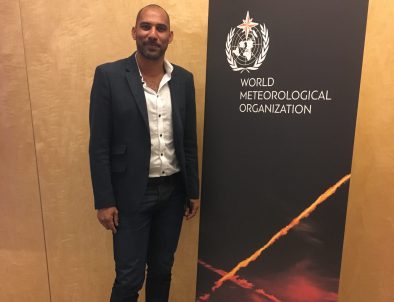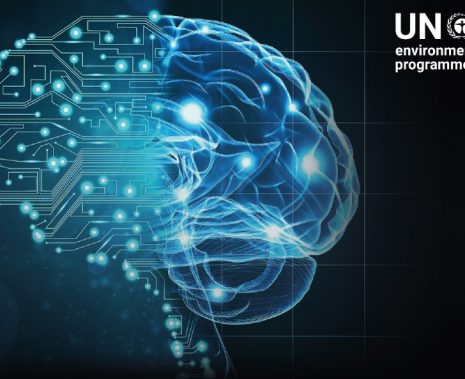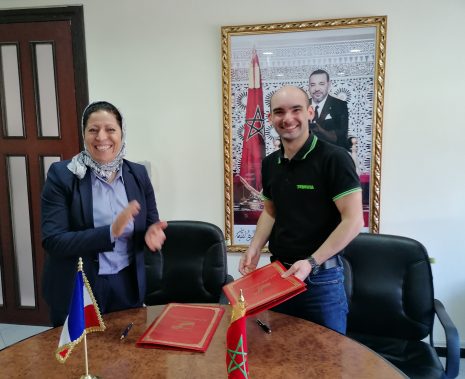TENEVIA is presenting its technological hydrometry innovations using video during the work group session on innovation in hydrometry: From Ideas to Operation, organised by the World Meteorological Organisation (WMO) and the International Association of Hydrological Sciences: Measurements and Observations in the 21st century (MOXXI).
The hydrological cycle is essential for understanding the natural processes. However, the monitoring systems currently used by national hydrological departments are very costly to install and maintain. The conventional systems are too costly an investment for low-income countries. The limited budgets of developing countries, as well as budget reductions in developed countries, mean that manufacturers and hydrometry equipment clients must find more affordable solutions. MOXXI and HydroHub respond jointly to the need to improve data quality, spatial and temporal resolution and the availability of hydrological observations through innovation and multidisciplinarity.
The WMO’s HydroHub (global hydrometry support facility ) has been specifically designed to set up operational systems and waterway monitoring services, expand the hydrological database and facilitate free and open data sharing. Its main aims consist of offering a framework for developing innovative operational tools for hydrometric monitoring and water information systems using new hydrometric designs and favouring coordination between ongoing projects and funders. The end goal is to integrate innovative approaches into traditional hydrometry to improve efficiency and durability in the water process. This also includes formulating adequate standards and quality management practices.
This joint IAHS MOXXI and WMO HydroHub workshop will create a sight check for scientists from MOXXI and the WMO community for:
- stimulating discussion on the future integration and implementation of innovative hydrological measuring systems;
- sharing and circulating research results within the MOXXI community;
- identifying the main gaps in observation, methodology issues and research needs that could benefit from MOXXI’s innovative and interdisciplinary approach.
The meeting will bring together innovators and scholars on the one side, and water management and national hydrometeorological department experts on the other, to share experiences and facilitate the integration of the new technologies into the standard hydrological observation networks.
The different contributions from the event’s participants will concern innovative sensors, opportunistic observations, data from the public, remote sensing, innovative data analysis methods, detection networks and innovative observations in all areas of earth sciences. Particular attention will be paid to assessing the quality of the data in view of standardising innovative approaches.
PROGRAM AND CONFERENCE PARTICIPANTS
Session 1: Gauging floods
- Back to the Future of stream gauging – J. Le Coz (IRSTEA)
- Gauging Flash-Floods – K. Liechti, S. Boss, B. Fritschi, M. Zappa (WSL)
- discharge.ch – S. Peña-Haro, B. Lüthi, T. Phillipe, T. Siegfried, L. Bošnjak (discharge.ch)
- Operational vision-based hydrometry – W. Castaings, T. Barth, G.-M. Saulnier, J. Abt,G. Marsy, J. Demantke, T. Michon, A. Brun (TENEVIA ; CNRS / Université de Savoie Mont-Blanc)
- LowCost 3D for Extreme Events – H. Sardemann, A. Eltner (Université technologie de DRESDEN)
Session 2: Satellite-based monitoring
- Operational river monitoring from Sentinel-3 radar altimetry – C. M. M. Kittel, P. Bauer-Gottwein (DTU Environment)
- Geophysical monitoring by new innovation space technology and interface – Y. Ozorovich, Y. Kontar, V. Santiago-Fandino, A. Fournier-Sicre, A. Ivanov, S. Klimov, P. Povinec (Space Research Institute, Russian Academy of Sciences, 84/32 Profsouznaya, Moscow 117997, Russia ; Collage of Sciences, The University of Findlay & Federal GEOS Funding, 1405 Windermere Drive, Findlay, Ohio 45840, USA ; United Nations Organization, El Curbiellu 28 Peon, 33314, Villaviciosa, Asturias, Spain ; IAAA International Group, France ; Swiss Space Center, EPFL ; Bratislav University, Slovakia)
- Livelo – Groundwater data logger – R. Baudoux, T. Wyss, R.-H- Li, V. Komplita, E. Migraine, Y. Rieckhoff (EPFL)
Session 3: Dealing with networks
- TranscodX: A Generation of Full Stack Environmental Data – P. Celicourt, R. Sam, M. Piasecki (Sensaq LLC)
- Quality control of UK hydrometric data – K. Muchan, C. Sefton, S. Turner (UK National River Flow Archive ; Centre for Ecology & Hydrology, Wallingford, UK)
- A software for hydrological analysis – M. Vargas, S. Beskow, T. Caldeira, L. Corrẽa
- Livelo / Groundwater data logger – R. Baudoux, T. Wyss, R.-H- Li, V. Komplita, E. Migraine, Y. Rieckhoff (LIVELO)
Session 4: Monitoring water stress
- UAV-based remote sensing for tree responses to water stress – A. Harfouche, F. Tauro, R. Salvati, P. Ibba, A. Gay, G. Scarascia Mugnozza (DIBAF, University of Tuscia)
- Using IR to estimate water stress indicators – J. L. M. P. de Lima, M. M. Vargas, J. M. M. Gonçalves, I. P. de Lima, L. I.V. Santos, G. W. Nagel, J. R.C.B. Abrantes, M. Tudor (Department of Civil Engineering, University of Coimbra, Portugal ; Centre for Technological Development/Water Resources Engineering, Federal University of Pelotas, Brazil ; Center of Engineering/Civil Engineering, Federal University of Pelotas, Brazil ; Institute of Informatics/Post Graduate Program in Computing, Federal University of Rio Grande do Sul, Brazil)
- Monitoring large-scale pressurized irrigation system via surface energy balance- H. Awada, G. Ciraolo, A. Maltese, M. A. Moreno Hidalgo, G. Provenzano, F. Capodici, J. I. Còrcoles
Session 5: Rainfall monitoring
- A novel view on rainfall measuring – A. Cagninei, F. Laio, A. Croci, R. Ricupero, P. Cavagnero, M. Ferrabone, P. Mazzoglio, P. Allamano (WaterView)
- Rainfall monitoring using commercial microwave links – A. Overeem, H. Leijnse, R. Uijlenhoet (WAGENINGEN University ; Royal Netherlands Meteorological Institute – KNMI)
- Mobile phone network for rainfall measurement in Africa – M. Turko, M. Gosset, F. Cazenave, N. Chahinian, C. Bouvier, M. Alcoba, J.-P. Bricquet (GET & IRD)
Session 6: Water quality and soil monitoring
- Electrical conductivity and water quality in rivers – P. Benettin, A. Rinaldo, B. van Breukelen (EPFL)
- Infrared thermography in surface hydrology: Soil water repellency – J.R.C.B. Abrantes, J.L.M.P. de Lima, S.A. Prats, J.J. Keizer, A.A.A. Montenegro, M.I.P. de Lima
- IGRAC’s Global Groundwater Monitoring Network and needs for new technology – C. Ruz Vargas, N. Kukuric (IGRAC)
Session 7: Citizen science
- Flood monitoring with social media, citizen observatory, wireless sensor network, and machine learning – E. M. Mendiondo, C. Restrepo-Estrada, M. C. Fava, S. C. Andrade, J. P. de Albuquerque, N. Abe, J. Ueyama, L. Degrossi, G. Furquim, G. Pessin
- CrowdWater – S. Etter, B. Strobl, I. van Meerveld, J. Seibert (Université de Zurich)
- Contribution of citizen science in flood hazard assessment– B. Sy, C. Frischknecht, H. Dao, D. Consuegra, G. Giuliani (Université de Genève)
- TAHMO’s solution for weather observation in Africa – R. Hochreutener, J. Selker, N. van de Giesen, F. Annor (OSU ; TUDELFT)
Session 8: Round table on drones for hydrology
- Unmanned Aerial Vehicles and hydraulics– F. Bandini, C. M. M. Kittel, B. Lüthi, M. Garcia, P. Bauer-Gottwein (Technical University of Denmark ;Photrack AG)
- Usage of drones in local governments: A case study of river stream monitoring – K. Mishev, A. Stojmenski, I. Mishkovski, D. Trajanov
Exploring the optimal setup for surface flow velocity measurements using PTV – S. Manfreda, S. Dal Sasso (University of Basilicata) - Thermal particle tracers for very shallow overland flow velocities – B. Mujtaba, J. L. M. P. de Lima (MARE ; Universidade de Coimbra)
- Image-based non-contact flow monitoring for communities at risk – M. Perks, A. Russell, A. Large (NewCastle University)






